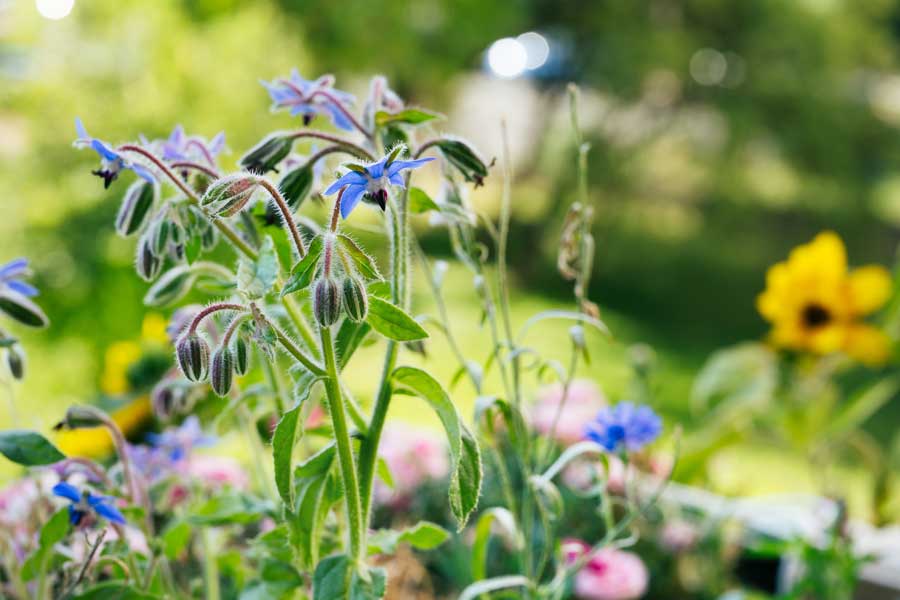Welcome to the wonderful world of borage (Borago officinalis), a versatile and beneficial herb for any garden. This remarkable plant, often referred to as starflower, is celebrated not only for its stunning blue flowers but also for its many uses and benefits. Understanding borage companion plants can help you maximize the health and productivity of your garden.
Borage is an annual herb that can reach an impressive height, adding a touch of beauty and functionality to your garden. Known for its edible flowers and leaves, borage is often used in teas, salads, and even for skin care. It contains valuable nutrients such as potassium and calcium, and its anti-inflammatory properties make it a great natural remedy for conditions like rheumatoid arthritis and dermatitis. The herb also produces seed oil rich in gamma-linolenic acid, beneficial for overall health.
One of the best things about borage is its role in companion planting. Borage companion planting help enhance the growth and flavor of other plants while providing natural pest control. For instance, borage and tomatoes make an excellent pair, as borage can deter tomato hornworms and improve tomato flavor. Similarly, borage and strawberries benefit from each other, with borage improving the flavor of strawberries and keeping pests at bay.
Best Plants for Borage Companion Planting
Tomatoes
Borage and tomatoes form a fantastic duo in the garden. Borage helps deter pesky tomato hornworms, making your tomato plants healthier and more vibrant. This lovely herb also boosts the flavor of your tomatoes, giving you a tastier harvest. Plus, the bright blue flowers of borage attract pollinators, ensuring your tomato plants produce abundantly.
Enhanced flavor, pest deterrence, and improved pollination are key benefits. Just ensure there’s enough space for both plants to thrive.
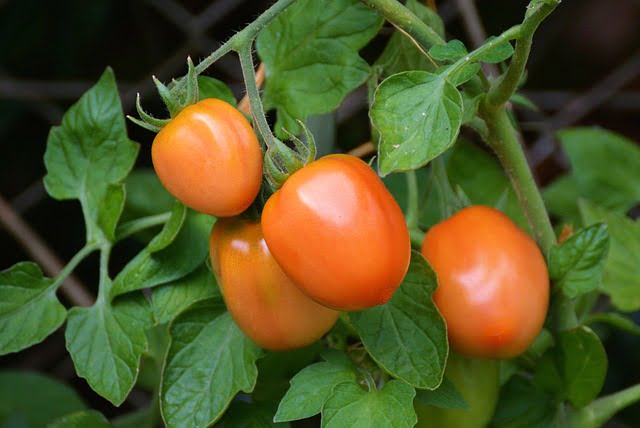
Strawberries
Strawberries love growing next to borage. This wonderful pairing improves the flavor of your strawberries, making them sweeter and juicier. Additionally, borage helps keep insect pests at bay, ensuring your strawberry plants remain healthy and productive.
Borage enhances strawberry flavor and repels pests. Keep the plants well-spaced to allow ample room for growth.
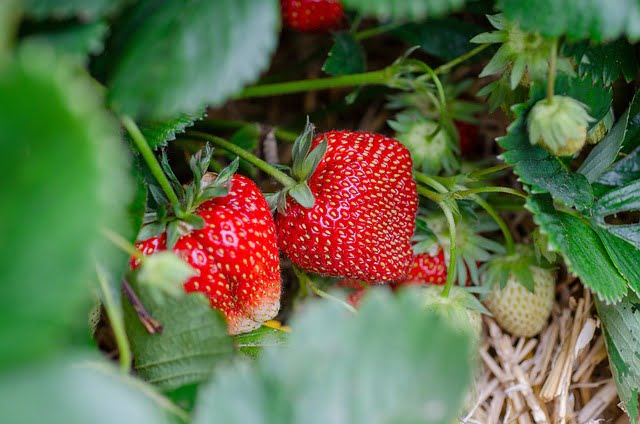
Cabbage
Cabbage benefits greatly from the presence of borage. The borage plants help repel cabbage worms, which can be quite destructive. This means your cabbages will grow bigger and healthier. Borage also attracts beneficial insects, which can help keep other pests under control.
Pest repellence and improved plant health are major benefits. Just watch for the borage’s spread, ensuring it doesn’t crowd the cabbage.
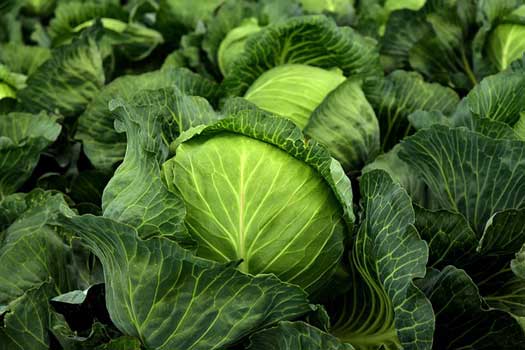
Broccoli
Broccoli and borage are excellent companions. Borage helps deter pests that commonly attack broccoli, such as cabbage worms and aphids. This ensures your broccoli plants grow strong and produce well. The presence of borage also attracts pollinators and beneficial insects to your garden.
Enhanced pest control and beneficial insect attraction are the primary advantages. Monitor plant spacing to maintain optimal growth conditions.

Cauliflower
Cauliflower thrives when planted near borage. Borage’s ability to repel harmful insects like cabbage worms ensures that your cauliflower plants remain healthy and productive. The beautiful borage flowers also attract pollinators, contributing to a more vibrant garden ecosystem.
Pest deterrence and pollinator attraction are significant benefits. Make sure both plants have enough space to flourish.

Squash
Squash plants grow exceptionally well next to borage. Borage helps repel squash bugs, a common pest, allowing your squash to grow unimpeded. Moreover, borage attracts pollinators, which is crucial for the fruiting of squash plants.
Key benefits include pest control and improved pollination. Ensure ample space to prevent overcrowding.

Zucchini
Zucchini pairs wonderfully with borage. The herb repels pests like squash bugs, ensuring your zucchini plants stay healthy and productive. Additionally, borage’s flowers attract bees and other pollinators, which boosts zucchini yield.
Enhanced pest control and pollination are major advantages. Maintain adequate spacing for optimal growth.

Cucumbers
Cucumbers enjoy the company of borage. Borage helps deter cucumber beetles, a common pest for cucumbers. This results in healthier cucumber plants and a more bountiful harvest. The presence of borage also attracts pollinators, ensuring your cucumbers set fruit successfully.
Benefits include pest deterrence and improved pollination. Space plants appropriately to allow for proper growth
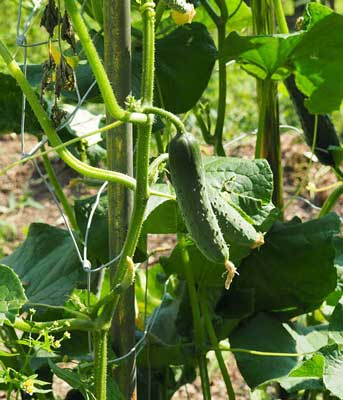
Peas
Peas and borage make a wonderful pair in your garden. Borage attracts pollinators and beneficial insects, which help peas flourish. Additionally, borage improves the soil, creating a healthier environment for your pea plants.
Enhanced pollination and improved soil health are key benefits. Ensure both plants have adequate space to thrive
Read More: Peas Companion Plants

Beans
Beans thrive when planted near borage. Borage’s ability to repel insect pests means your bean plants remain healthy and vigorous. The beautiful borage flowers also attract pollinators, boosting the productivity of your bean plants.
Pest control and increased pollination are major advantages. Maintain enough space for both plants to grow optimally.
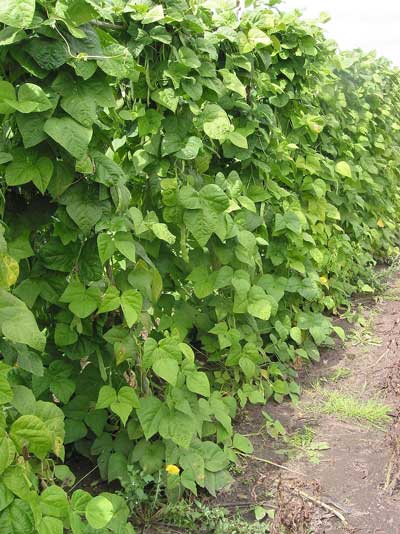
Eggplant
Eggplant benefits greatly from being planted alongside borage. Borage helps deter pests like the Colorado potato beetle, which can be detrimental to eggplants. Additionally, the vibrant borage flowers attract pollinators and other beneficial insects to your garden.
Enhanced pest deterrence and pollinator attraction are significant benefits. Ensure proper spacing to prevent overcrowding.
Read More: Eggplant Companion Plants
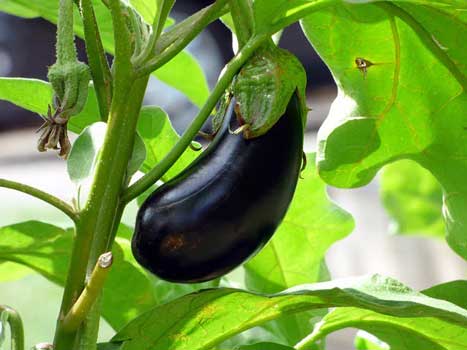
Roses
Roses and borage are a match made in gardening heaven. Borage improves the health and growth of rose bushes, helping them bloom more beautifully. It also repels pests like aphids, keeping your roses pristine.
Improved plant health and pest control are major benefits. Allow enough space for both plants to flourish.

Lettuce
Lettuce loves growing next to borage. The borage plants provide partial shade, helping to keep lettuce cool and reducing the risk of bolting. Borage also attracts beneficial insects that can help protect your lettuce from pests.
Shade provision and pest protection are key benefits. Ensure enough room for both plants to grow well.
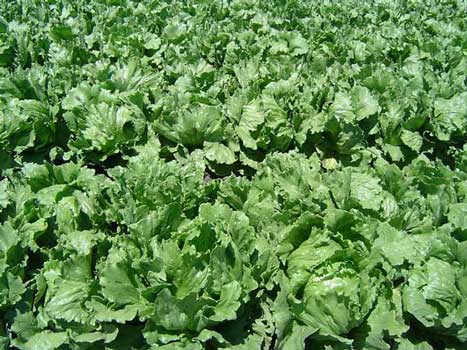
Thyme
Thyme and borage grow well together. Borage attracts pollinators, which benefit thyme’s growth and flowering. Additionally, borage helps deter insect pests, ensuring your thyme remains healthy.
Enhanced pollination and pest deterrence are significant benefits. Maintain adequate spacing for both plants to thrive.

Rosemary
Rosemary pairs wonderfully with borage. The herb benefits from borage’s ability to attract pollinators and beneficial insects, boosting its growth. Borage also helps repel certain pests that might otherwise affect rosemary.
Increased pollination and pest control are primary advantages. Ensure proper spacing for optimal growth conditions.

Basil
Basil and borage make an excellent gardening pair. Borage attracts pollinators and beneficial insects, which help basil flourish. Additionally, borage can improve the overall health and growth of basil plants.
Enhanced pollination and improved plant health are significant benefits. Maintain enough space for both plants to grow healthily.

Planting and Growing Borage – Borage Companion Planting
Planting and growing borage in your garden is a rewarding experience. This beautiful herb, known for its striking blue flowers and versatility, offers numerous benefits to your garden ecosystem. Let’s explore where to plant borage and how to grow it alongside tomatoes, ensuring you understand borage companion plants, borage uses, and the overall benefits of this wonderful herb.
Where to Plant Borage
Finding the perfect spot for borage (Borago officinalis) in your garden is key to its success. This herb borage thrives in various locations, but there are a few things to keep in mind for optimal growth.
Suitable Garden Locations
Borage loves sunny spots! It does best when planted in areas that receive full sun, although it can also tolerate partial shade. When considering borage sun requirements, choose a location that allows borage to bask in plenty of sunlight while providing enough space for its growth.
Soil Requirements
Borage prefers well-draining soil, which helps prevent root rot and other issues. Before planting, ensure the soil is rich in organic matter. You can improve your soil by adding compost or well-rotted manure. This not only enhances drainage but also provides essential nutrients for your borage plants.
Considerations for Self-Seeding and Reseeding
One of the fantastic features of borage is its ability to self-seed. Once established, borage can reseed itself, ensuring you have a continuous supply year after year. However, if you prefer to control its spread, simply remove the spent flowers before they set seed. This way, you can enjoy borage without it taking over your garden.
How to Plant Borage with Tomatoes
Planting borage with tomatoes is a match made in garden heaven. These two plants complement each other beautifully, leading to a healthier and more productive garden.
Seedlings vs. Seeds
You can start borage from seeds or seedlings. Seeds are an economical option and germinate quickly. Simply scatter the seeds on the soil surface and lightly cover them with soil. If you’re using seedlings, plant them about 12 inches apart to give them room to grow.
Planting in Partial Shade vs. Full Sun
Borage and tomatoes both thrive in full sun. However, if your garden has areas of partial shade, borage can still do well. Ensure tomatoes get plenty of sunlight for optimal fruit production, and let borage adapt to the available light conditions. Their flexibility makes them easy to grow together.
Managing Borage’s Spread and Growth
Borage grows quickly and can become quite large, so it’s essential to manage its spread. Regularly check your borage plants and trim them if they start to overshadow your tomatoes. This ensures both plants get the sunlight and space they need. Additionally, because borage attracts pollinators and beneficial insects, it helps tomatoes thrive by improving pollination and deterring pests.
By planting borage with tomatoes, you’re creating a harmonious garden environment where both plants can flourish. Borage’s bright blue flowers add a splash of color and beauty, while its benefits extend to the overall health of your garden.

Borage Companion Planting: FAQ’s
Does borage need full sun?
Yes, borage thrives in full sun. It needs plenty of sunlight to grow healthy and strong, so plant it in a sunny spot in your garden for the best results.
What is borage good for?
Borage is a versatile plant with many benefits. It attracts pollinators like bees and butterflies, enriches the soil with trace minerals, and serves as a natural pest deterrent. Plus, it’s edible and has medicinal properties.
What is the borage plant size?
Borage is a medium-sized herb, usually growing to about 18-36 inches in height and spreading about 12-24 inches wide. Its beautiful star-shaped blue flowers add a splash of color to any garden.
What are the borage light requirements ?
Borage loves the sun. It requires full sunlight for at least 6 hours a day to flourish. However, it can tolerate partial shade, especially in hot climates.
How tall does borage grow?
Borage height typically grows 18-36 inches. Its tall, sturdy stems make it a striking addition to your garden.
Can you eat borage?
Absolutely! Borage is not only beautiful but also edible. Its leaves and flowers are both consumable and can be used in various culinary dishes.
What can you do with borage?
Borage is a versatile herb. You can use its fresh leaves in salads, garnish your drinks with its vibrant flowers, or even steep the leaves and flowers in hot water to make a refreshing tea. It’s also a wonderful addition to soups and stews.
How do you eat borage?
Borage leaves and flowers can be eaten raw or cooked. Add the young, tender leaves to salads for a cucumber-like flavor. The flowers make a pretty and tasty garnish for desserts, cocktails, and salads. You can also cook the leaves like spinach or use them in soups and sauces.
Can you eat borage leaves?
Yes, you can eat borage leaves. They have a mild, cucumber-like flavor, especially the young, tender leaves. Just remember to use them sparingly as they can be slightly prickly when raw.
How to plant borage with tomatoes?
Plant borage near your tomato plants to help improve their growth. Borage attracts pollinators and beneficial insects, which can increase tomato yields. Additionally, it deters pests like tomato hornworms. Simply plant borage seeds around your tomato plants, spacing them about 12 inches apart.
What does borage grow well with?
Borage is a fantastic companion for many garden plants. It grows well with tomatoes, strawberries, squash, and brassicas. Its ability to attract pollinators and repel pests makes it a valuable ally in the garden.
What to plant borage with?
Consider planting borage with tomatoes, strawberries, cucumbers, and squash. These plants benefit from borage’s pest-repelling properties and its ability to attract pollinators. Plus, it enhances their growth and health.
Why is borage a good companion plant?
Borage is an excellent companion plant for several reasons. It attracts pollinators like bees, which help with the pollination of neighboring plants. Its strong scent repels common pests such as hornworms and aphids. Additionally, borage improves soil health by adding trace minerals, promoting a healthier garden ecosystem
Borage Companion Planting Conclusion
In conclusion of borage companion planting, borage is a fantastic addition to any garden. Its vibrant flowers, beneficial properties, and compatibility with many plants make it a true garden hero. By using borage as a companion plant, you’ll attract pollinators, repel pests, and improve soil health. Your tomatoes, strawberries, cucumbers, and other plants will thrive alongside this remarkable herb.
With borage, you’re not just planting a beautiful flower; you’re enriching your entire garden ecosystem. Embrace the many benefits of companion plants for borage, and watch your garden flourish like never before.

